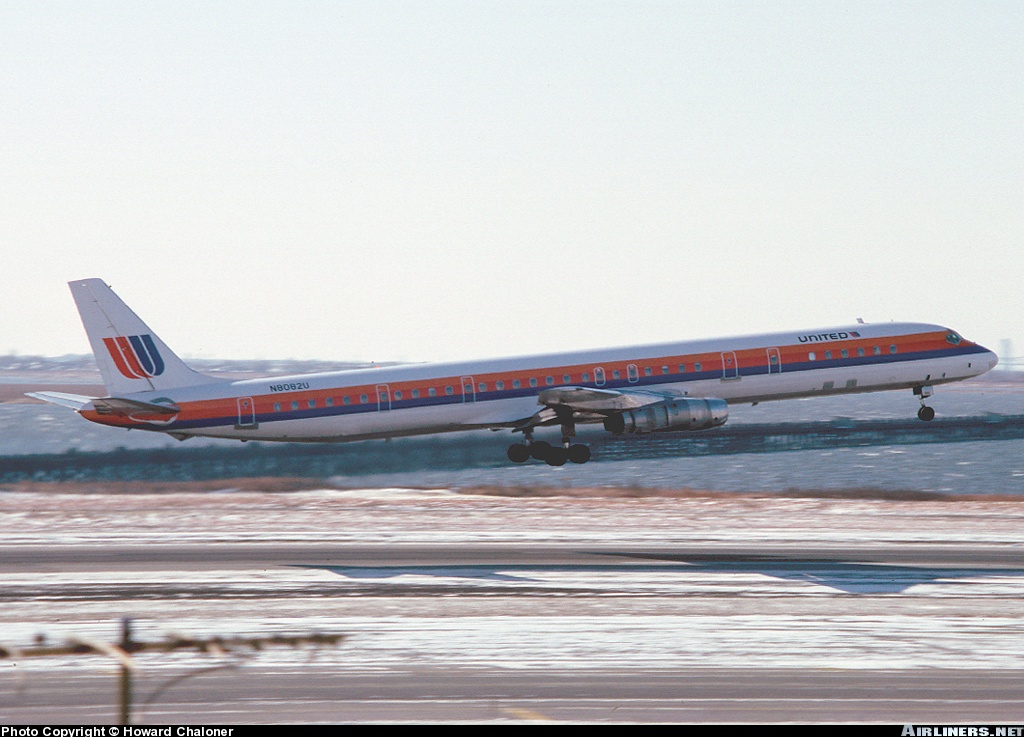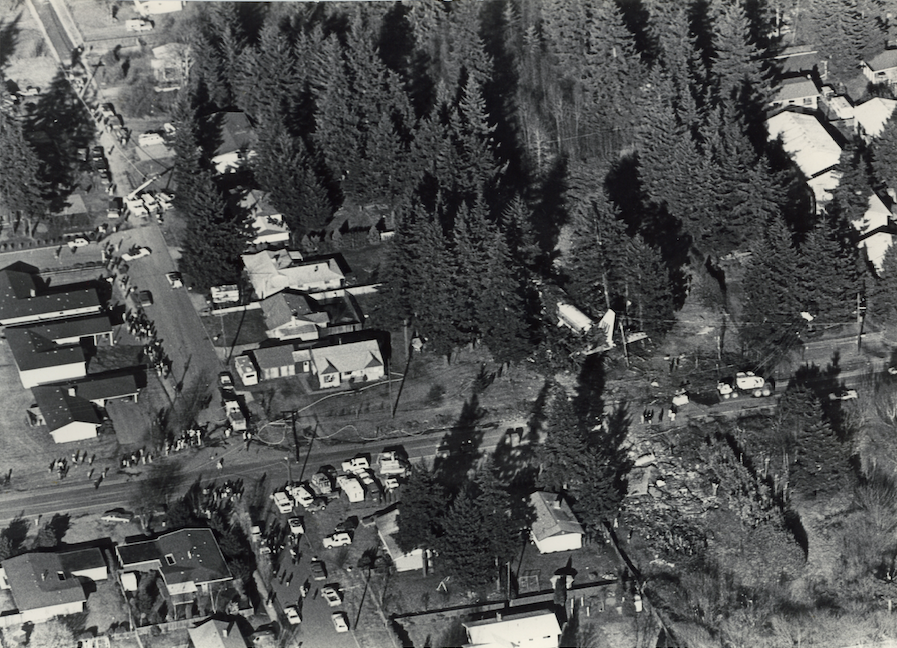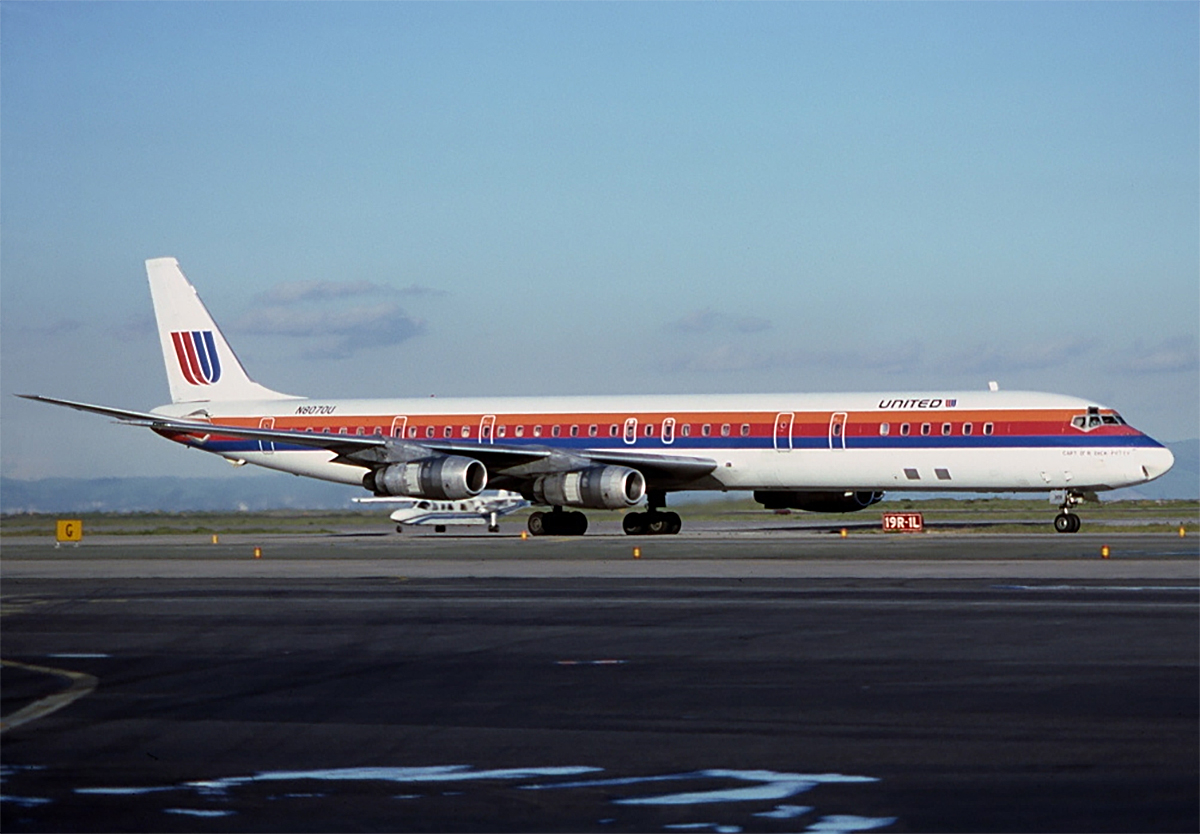
28 December 1978: United Airlines Flight 173, A McDonnell Douglas DC-8, N8082U, departed Stapleton International Airport (DEN), Denver, Colorado, enroute to Portland International Airport (PDX), Portland, Oregon. Under the command of Captain Malburn Adair McBroom, the airliner carried 181 passengers and 8 crew members. The planned duration of the flight was 2 hours, 26 minutes. The DC-8 carried 46,700 pounds (21,183 kilograms) of jet fuel, sufficient for the flight plus an additional 1 hour, 5 minutes fuel for the required 45-minute reserve and any contingencies.
On approach to Portland, the crew lowered the DC-8’s landing gear and flaps. They felt a heavy thump followed by a vibration and the airplane yawing. The indicator light showing that the main gear was down and locked did not illuminate.
Concerned that there was a problem with the landing gear, Captain McBroom aborted the landing and put the airliner in a holding pattern south of the airport. For approximately one hour, Captain McBroom, First Officer Roderick Duane Beebe, and Flight Engineer Forrest Ervin Mendenhall attempted to determine the nature of the problem. Finally, though the situation was not resolved, the crew turned toward Portland and prepared for an emergency landing.
At 18:06:46, the flight engineer reported, “We’re going to lose an engine,” and three seconds later, said, “We’re losing an engine.” The captain asked “Why?” The first officer responded, “Fuel.” The captain again asked “Why?”
At 18:07:06, Flight Engineer Mendenhall reported that the engine had “flamed out” (stopped running due to fuel exhaustion). Captain McBroom called Portland Approach Control and requested an immediate clearance to land at PDX, “now.” The airliner was then 18 miles south of the airport. McBroom asked Mendenhall to reset the landing gear circuit breakers. “See if we get gear lights.”
At 18:13:21, Mendenhall said, “We just lost two engines, guys.” Four seconds later, he said, “We just lost two engines—one and two.” [Both engines on the left wing.] McBroom said, “They’re all going,” and told First Officer Beebe to declare an emergency.
At 18:13:50, Beebe called, “Portland Tower, United One-Seventy-Three Heavy, mayday. We’re—The engines are flaming out. We’re going down. We’re not able to make the airport.” There were no further transmissions.
At approximately 18:15, United Flight 173 crashed in a residential area, about 6 nautical miles (11 kilometers) southeast of Portland International Airport. Eight passengers were killed, along with Flight Engineer Mendenhall and Senior Flight Attendant Joan Newton Wheeler. Another 23 persons were seriously injured. Two unoccupied homes were destroyed.

The National Transportation Safety Board (NTSB) investigation found:
3.2 Probable Cause
The National Transportation Safety Board determined that the probable cause of the accident was the failure of the captain to monitor properly the aircraft’s fuel state and to properly respond to the low fuel state and the crew-members’ advisories regarding fuel state. This resulted in fuel exhaustion to all engines. His inattention resulted from preoccupation with a landing gear malfunction and preparations for a landing emergency.
Contributing to the accident was the failure of the other two flight crewmembers either to fully comprehend the criticality of the fuel state or to successfully communicate their concern to the captain.
—NATIONAL TRANSPORTATION SAFETY BOARD AIRCRAFT ACCIDENT REPORT NTSB-AAR-79-7 , 7 June 1979, at Page 29

When the landing gear was lowered, a gear retraction cylinder failed, allowing the right main gear to fall into place. It locked, but a microswitch which should have activated the landing gear indicator light was damaged.
United Airlines’ operations manual required that the crew have the control tower make a visual check that the gear was down. Though it could not confirm that the gear was locked, if the visual check indicaated that landing gear appeared to be down, a landing was authorized. Captain McBroom deviated from this procedure.
The airliner was a McDonnell Douglas DC-8-61, serial number 45972, which had been delivered to United Airlines on 22 May 1968. At the time of the accident, it had flown a total of 33,114:33 hours.

The DC-8-61 is a four-engine turbojet-powered airliner with swept wings. It was a “stretched” variant of the basic DC-8 design, capable of carrying a maximum of 259 passengers. A 240 inch (6.096 meters) “plug” was installed forward of the wings and a 200 inch (5.08 meters) plug aft. This gave the airliner a total length of 187.4 feet (57.12 meters), with a wingspan of 142.4 feet (43.40 meters) and maximum height of 43 feet, 5.2 inches (13.239 meters). N8082 had a zero fuel weight of 201,927 pounds (91,592.6 kilograms), and a maximum certified takeoff weight (MTOW) of 325,000 pounds (147,418 kilograms). The maximum usable fuel was 23,393 U.S. gallons (88,552 liters).
The DC-8-61 was powered by four Pratt & Whitney Turbo Wasp JT3D-3B engines. This engine was a civil variant of the military TF33 series. The JT3D-7 was a two-spool axial-flow turbojet engine with a 2-stage fan, 14-stage compressor (7 intermediate-, 7 high-pressure stages) and 4-stage turbine (1 high- and 3 low-pressure stages). The JT3D-3B had a maximum power rating of 18,000 pounds of thrust. The engine was 145.5 inches (3.696 meters) long, 53 inches (1.346 meters) in diameter, and weighed 4,340 pounds (1,969 kilograms).
The DC-8-61 had a cruise speed of 0.82 Mach, and a maximum range of 3,200 nautical miles (5,926 kilometers). During a test flight at Edwards Air Force Base, 21 August 1961, a Douglas DC-8-43, N9604Z, reached Mach 1.1012.
© 2020, Bryan R. Swopes